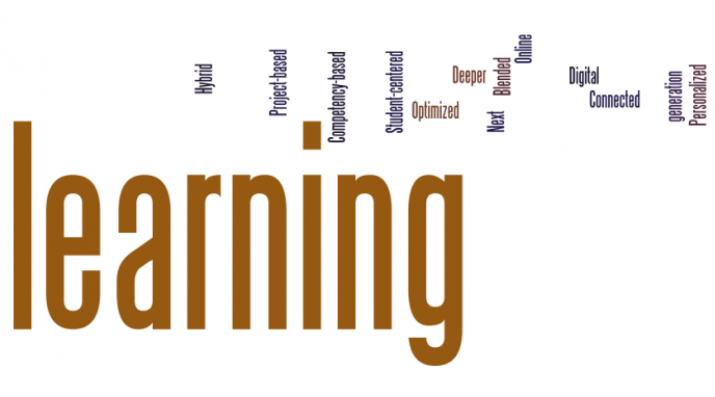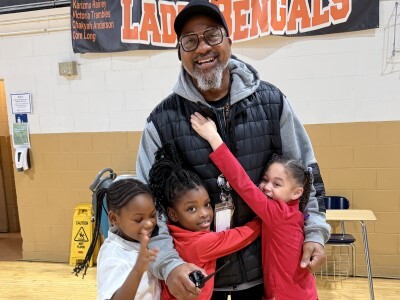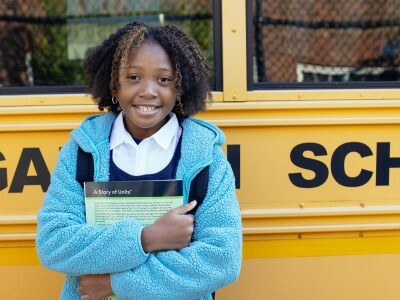Moving Towards Next Gen Learning
Topics

When educators design and create new schools, and live next gen learning themselves, they take the lead in growing next gen learning across the nation. Other educators don’t simply follow and adopt; next gen learning depends on personal and community agency—the will to own the change, fueled by the desire to learn from and with others. Networks and policy play important roles in enabling grassroots approaches to change.
Reimagining the desired outcomes and the common student experience of America’s public schools is a messy, chaotic business—and that’s what real change looks like.
*Reposted with permission from GettingSmart.com
Raise your hand if you have uttered any of the following phrases in the past week:
- Blended learning
- Competency-based learning
- Personalized learning
- Digital learning
- Online learning
- Connected learning
- Deeper learning
- Project-based learning
- Student-centered learning
- Optimized learning
- Hybrid learning
- Next generation learning
Now raise your hand if you can define them so that the neighbor you barbecued with last weekend could remember and articulate the distinctions. An extra hot dog—with relish!—goes to that neighbor who could also describe how they overlap, connect with, and build on each other.
We are, let’s face it, a Tower of Babel when it comes to defining what we’re all doing here. That sounds disparaging, but I don’t actually mean it that way. Reimagining the desired outcomes and the common student experience of America’s public schools is a messy, chaotic business – and that’s what real change looks like.
We can make the accomplishment of positive change a few degrees easier, though, by continuously striving to introduce bits of clarity amidst the messiness. Herewith, a modest effort to do just that.

The graphic you see here builds (with Michael Horn’s and Heather Staker’s blessing) on the taxonomy of blended learning developed by the Christensen Institute. It creates a landscape map of current reform efforts in the blended/competency-based/personalized learning space using four key dimensions of their taxonomy: degree of variation in, and student input into (even control of), the time, pace, path, and place of learning. Time and place are being stretched these days through digital, online media (the X axis) path and pace are being stretched in models (up along the Y axis) that make students the organizers and managers of their own learning.
Quadrant I: learning in traditional school structures and classroom settings, increasingly with some level of digital support. This is probably where most of the country is, these days: use of digital and online content and tools (including quite extensive use), but tucked inside of pretty recognizable age-based classroom models.
Quadrant II: blended learning in its most common forms (lab and station rotation), by which practitioners are using digital learning to transform some aspects of the traditional model. There’s a lot of healthy innovating around time and place in this quadrant, lately around flipping what transpires in classrooms and what’s being asked of students at home. Quadrant II is also where a growing swath of schools believe they are, but in truth, many haven’t migrated that deeply out of Quadrant I. This quadrant is where Rocketship and Florida Virtual live, and is what resources like Khan Academy are being most widely used to support. The Christensen Institute has recently updated its taxonomy to suggest hybrid learning as a term for “sustaining” forms of blended-learning innovation that would land in Quadrant II, as opposed to disruptive forms.
Quadrant III: personalized and competency-based learning, which may be digitally supported or not, but which are where learning becomes stretched by path and pace moving towards more individual customization for (and by) each student in the design and management of his/her learning pathways. Not many schools (yet) have moved entirely beyond age-based student progression, but a number of school networks and districts are experimenting. Big Picture is here, along with New Tech and EL Education, and a handful of school districts; all of them would say they're enlisting students in building their own competencies, to a degree at their own pace, through active, project-based, experiential learning.
Quadrant IV: disruptive forms of blended, next generation learning, all of which combine elements of the other quadrants, encompassing innovation in the use of all four elements—time, place, path, pace. Personalized learning, which some might include in this quadrant, incorporates variation and student enlistment in the time/pace/path/place of learning while being generally agnostic on its degree of digital support. We would propose that next generation learning, on the other hand, includes that assumption—that in order for personalized learning to be implemented effectively, affordably, and equitably, it must include a strong digital component.
Who’s working to design and implement next gen learning? Summit, Cornerstone, Hybrid High and districts like Danville KY are among the Next Generation Learning Challenges (NGLC) grantees doing the deepest explorations within Quadrant IV. We call their models breakthrough schools. You can read about more of these explorers here.
And—relatively soon—we will begin to see much more Quadrant IV activity, nationwide. This week, NGLC unveils the first full cohort of its Regional Funds initiative, designed to enable communities and regions to foster the development of schools living by the principles of next gen learning. The initiative will support partner organizations in Chicago, Colorado, New England, New Orleans, Oakland, and Washington DC to work with local educators (and some of the most inventive Quadrant IV pioneers) to create clusters of new or converted breakthrough schools.
They will be seeking to lift student outcomes through the marriage of two ideas: next generation learning as the expression of what could be happening in schools, and the kind of dynamic ecosystem support that Tom Vander Ark writes about in his Smart Cities work, as the means to help next gen learning grow. The Regional Fund schools will begin to emerge over a series of autumns beginning in 2015.
When they do, their particular mix of approaches will place them somewhere in Quadrant IV as they seek to fuse aspects of blended, competency-based, personalized, student-centered learning into a coherent whole. They’ll join a movement of efforts across much of the reform landscape to do the same, in an infinite array of “mixes.” Will it matter what learning-reform labels most aptly describe their model? Yes, to researchers, policymakers, funders and system architects seeking to study and scale up ideas that work. But—possibly not, to everyone else. As one school head told us recently:
“We stay away from labels. Better to just talk in plain terms about what students are experiencing.”
Come to think of it: that’s likely what the hot-dog neighbor would rather hear, too.




